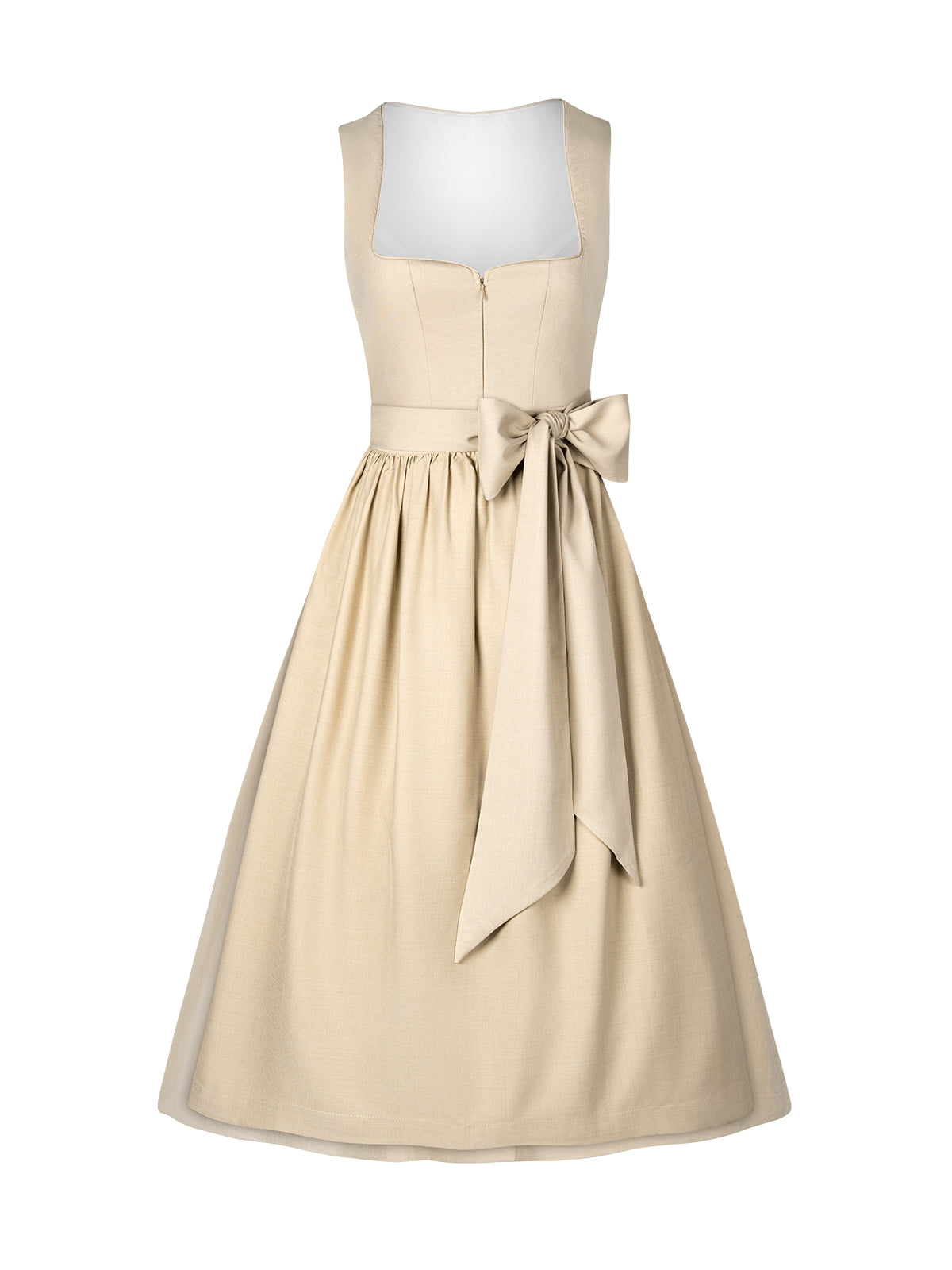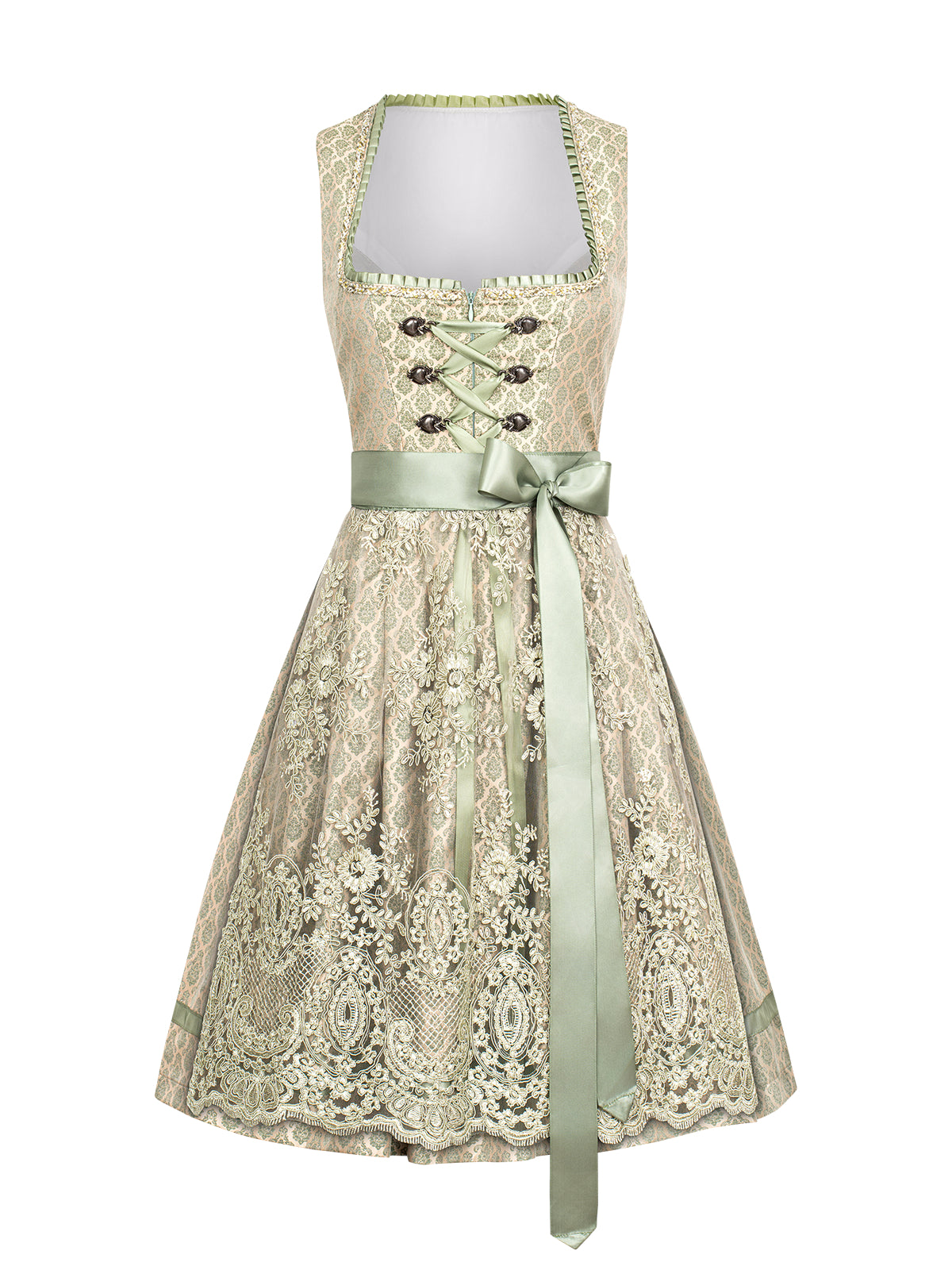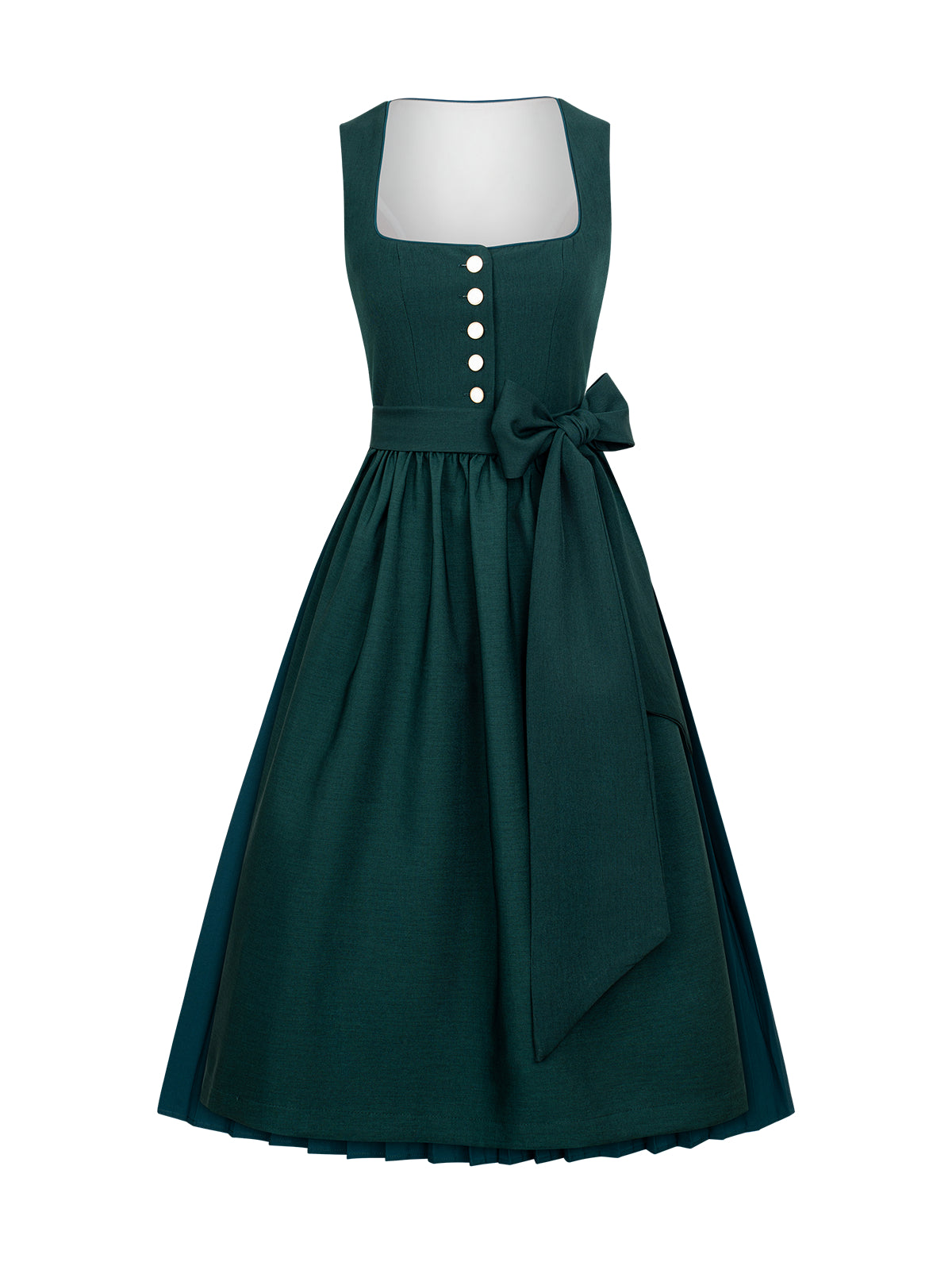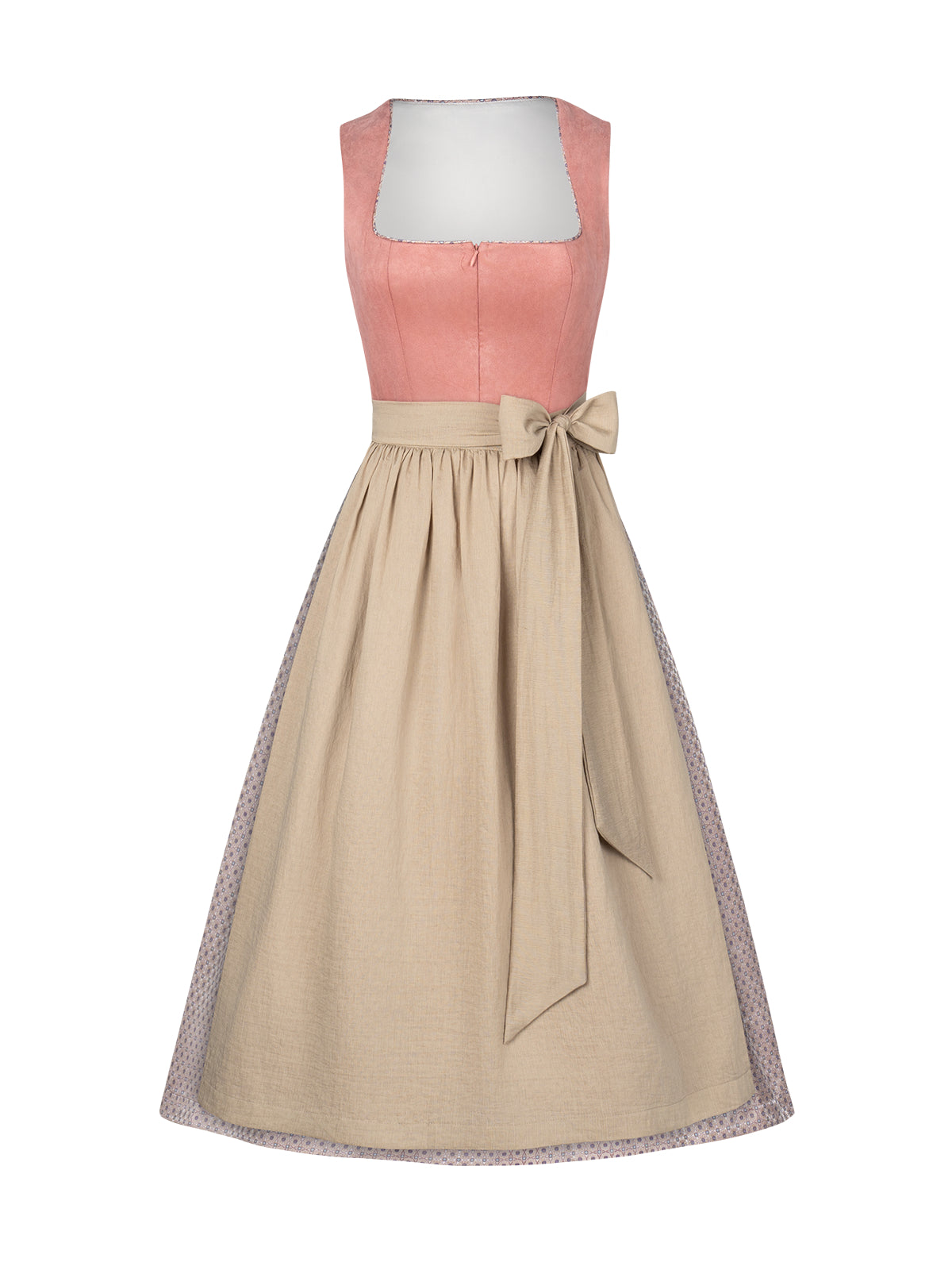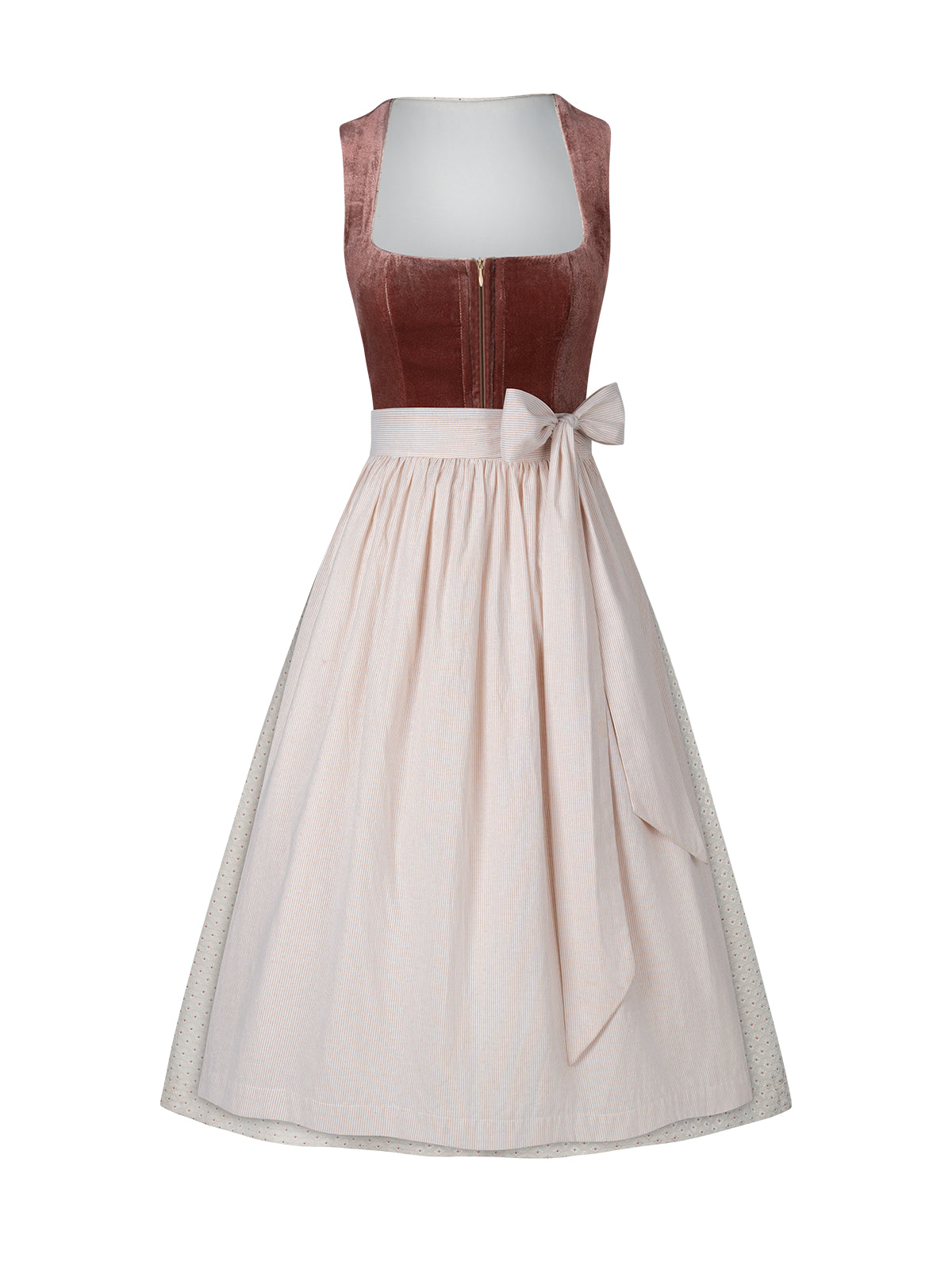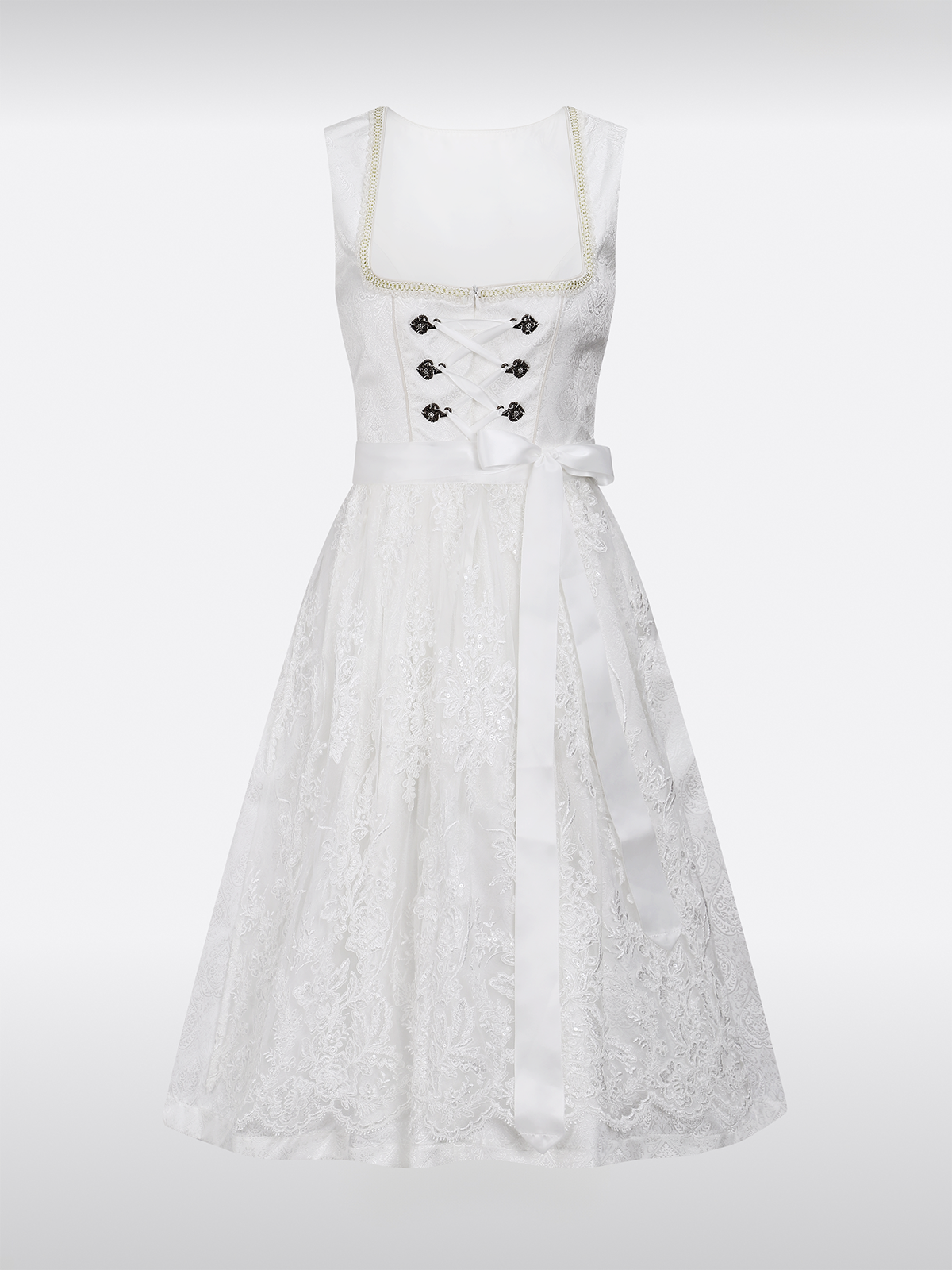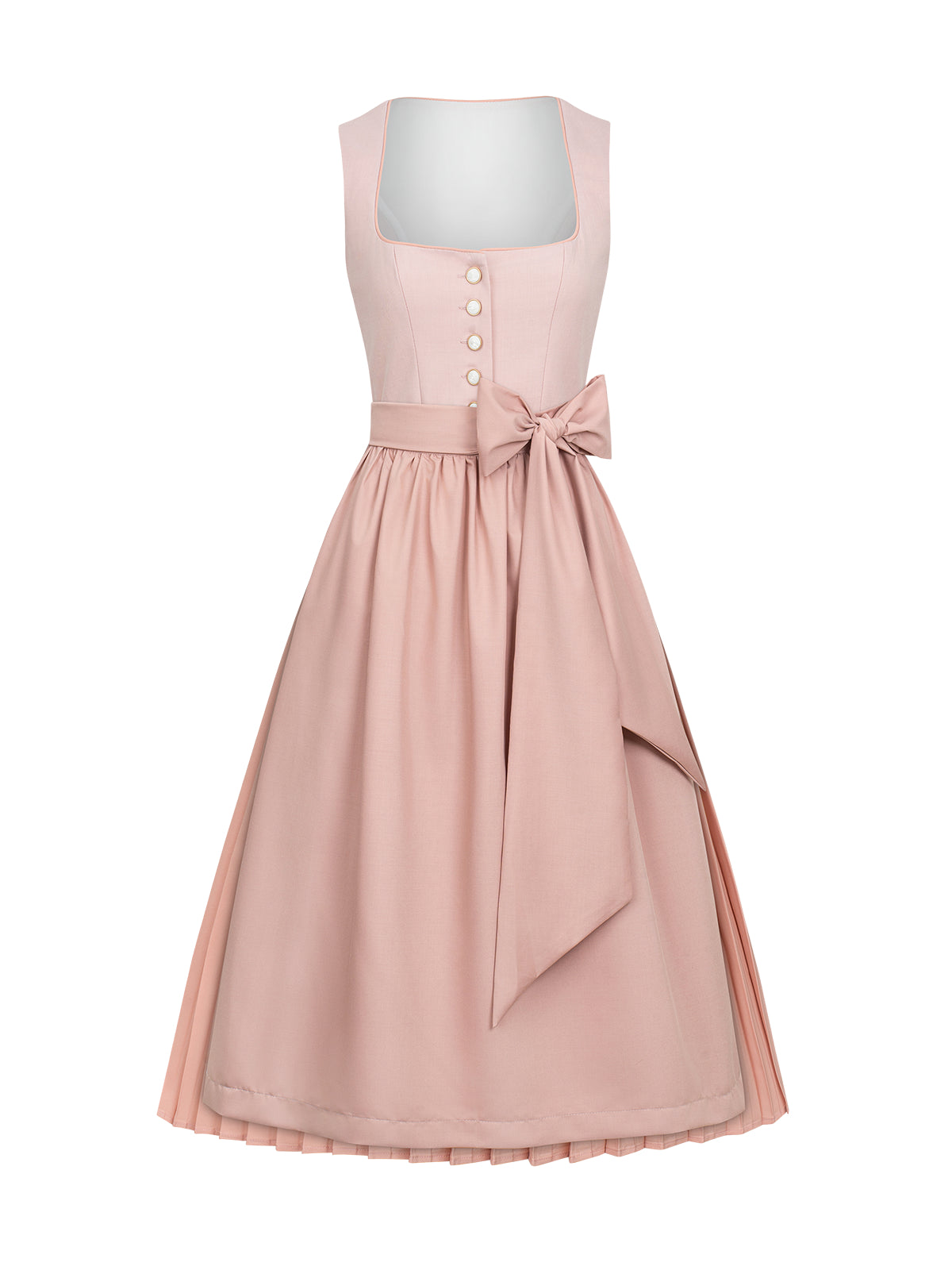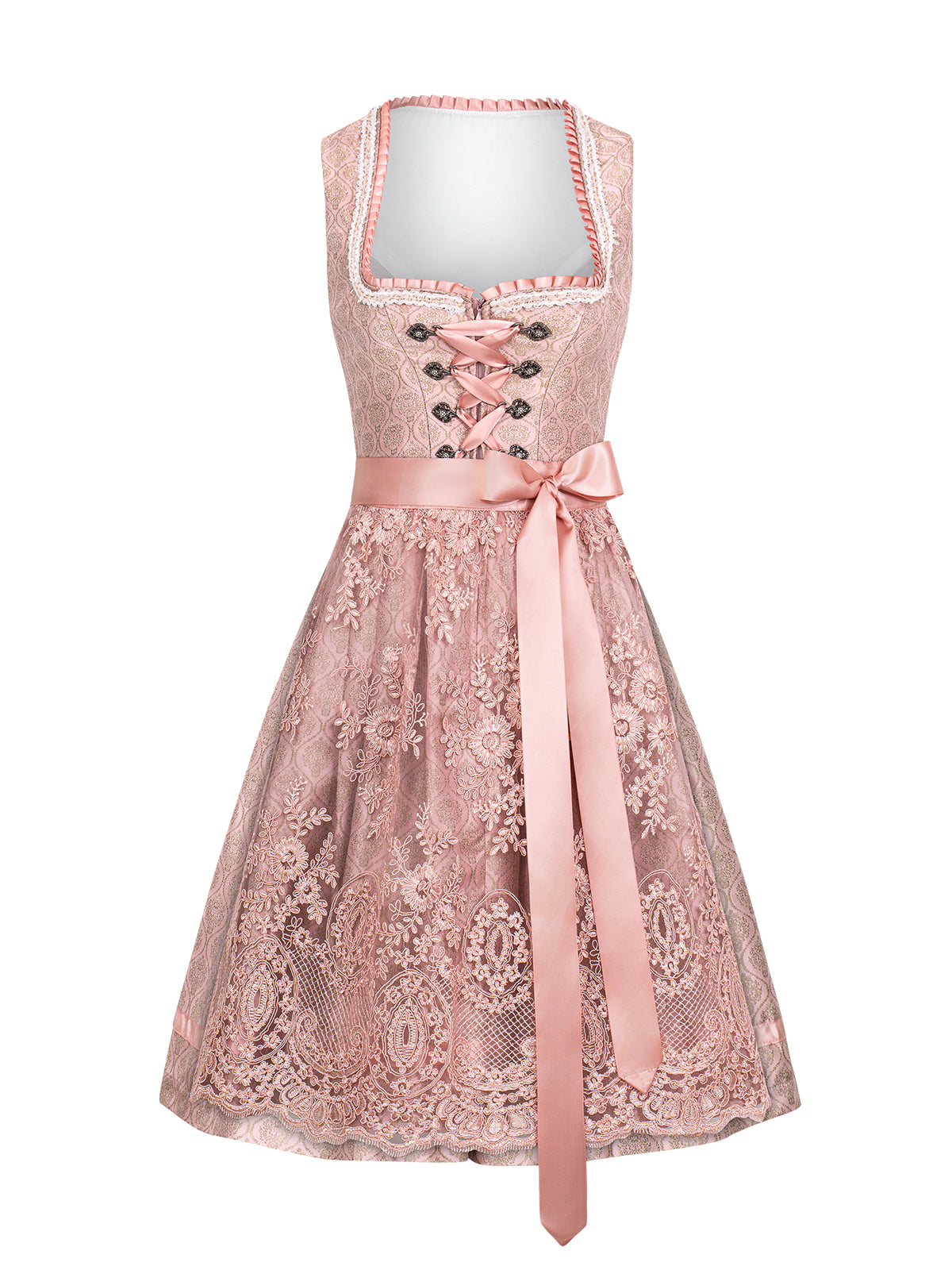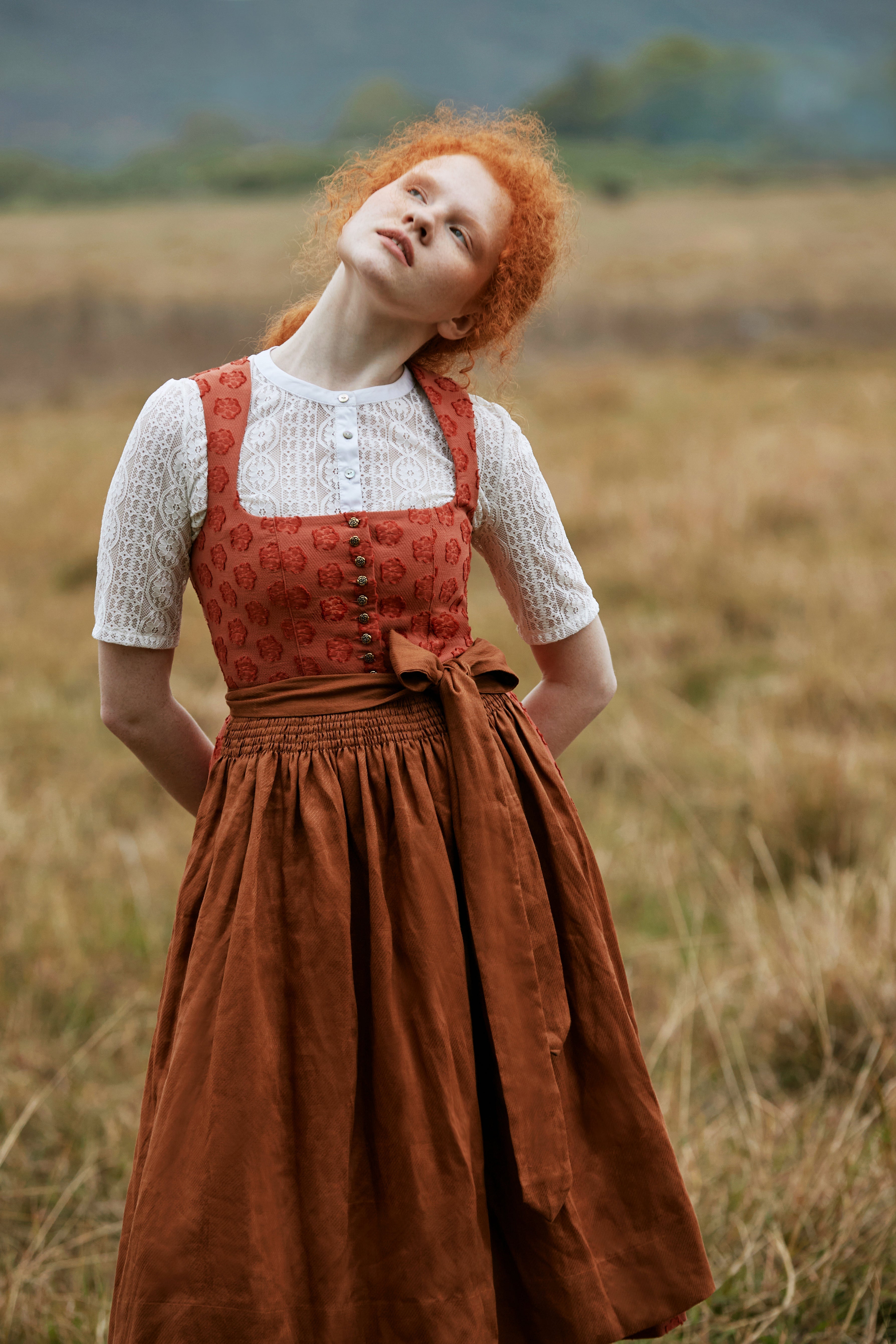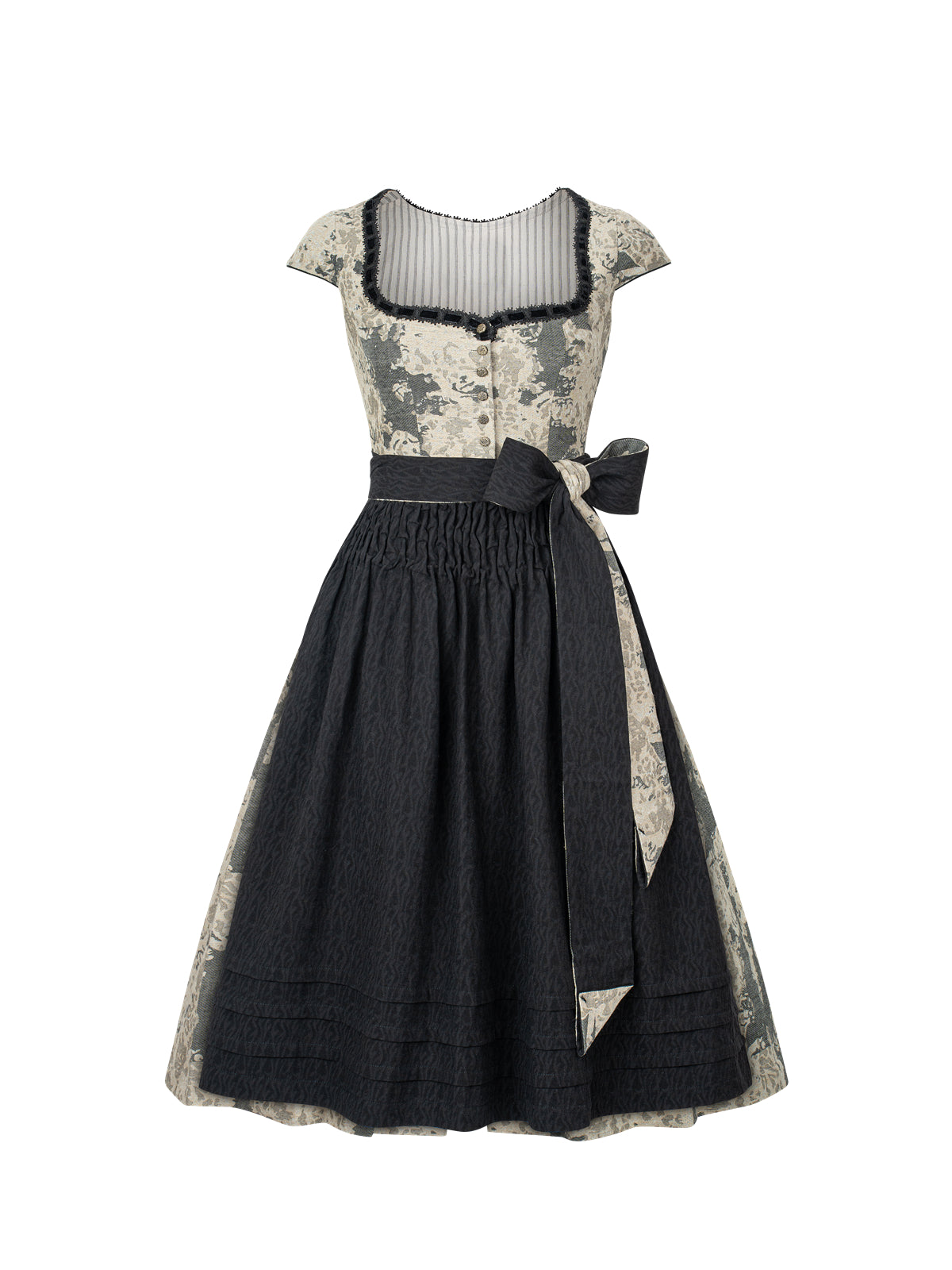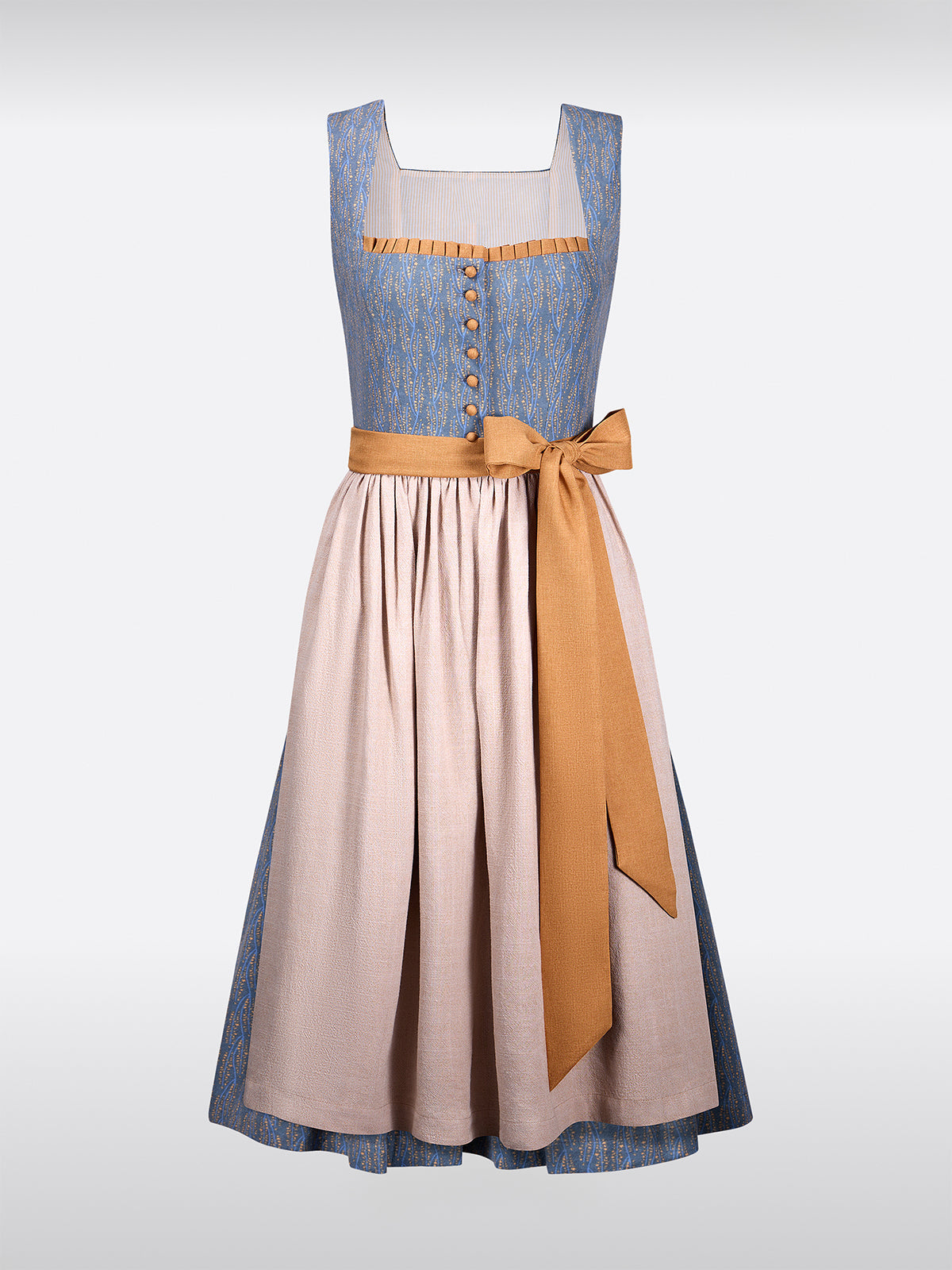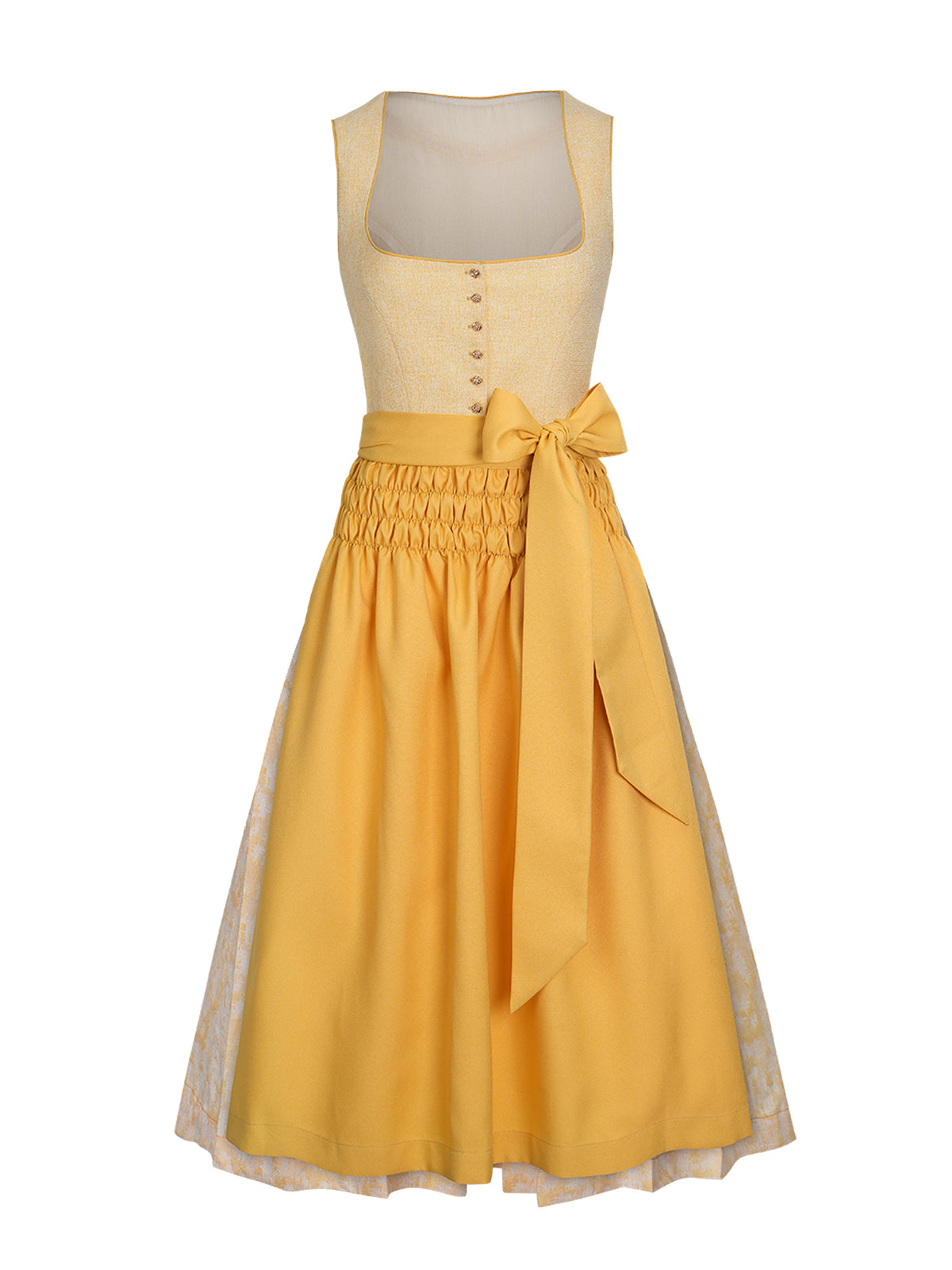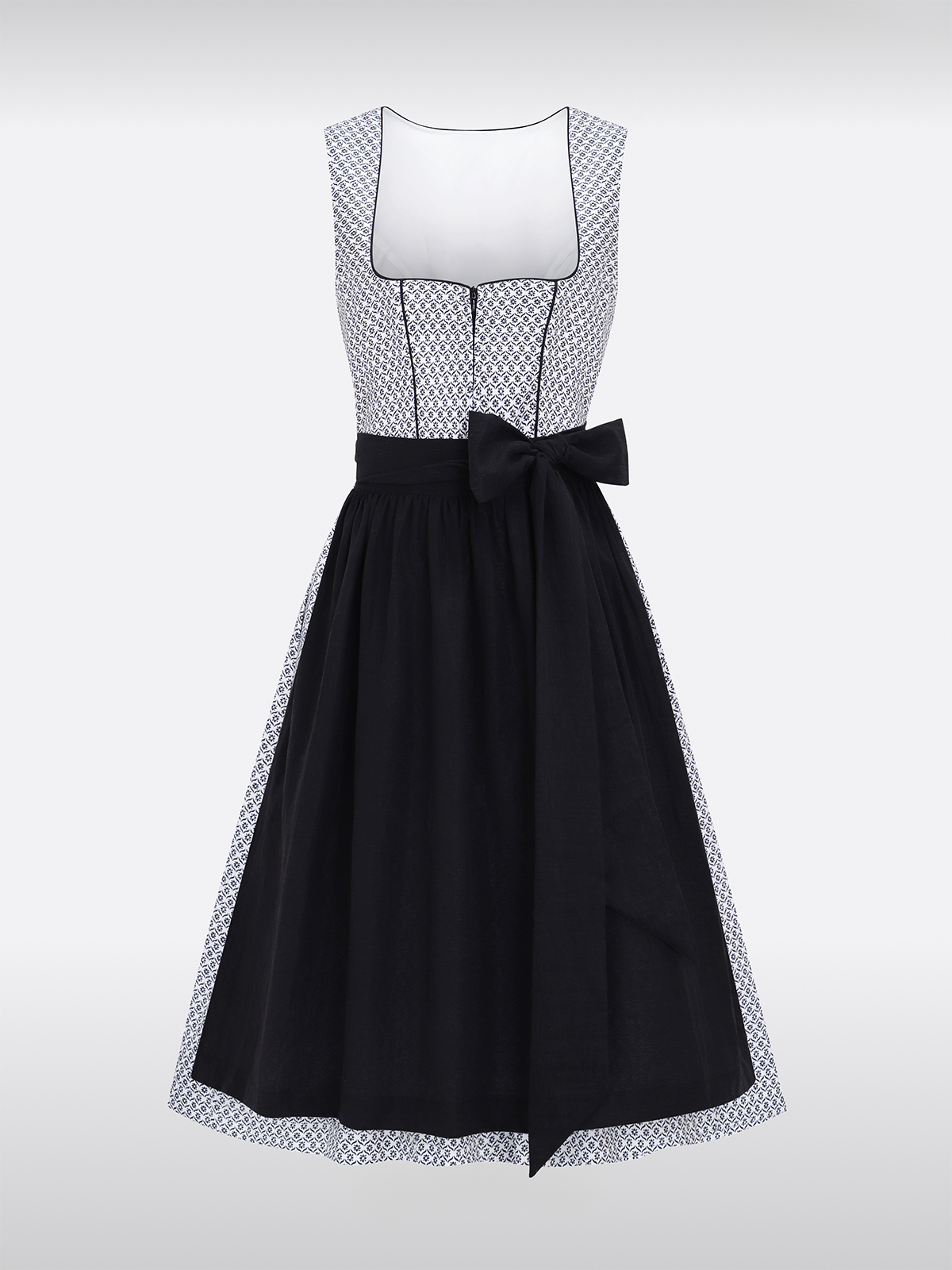Historical background
The Biedermeier period immediately followed the Napoleonic Wars. Europe was in a state of reconstruction and peace. In Germany, the middle class gained power and influence, and a new attitude to life emerged, reflected in culture, art, and fashion. Biedermeier fashion was characterized by a return to traditional values and an appreciation for the secret and the natural.
Women in the Biedermeier period were often active in the private sphere, and their clothing reflected this lifestyle. Biedermeier costumes were rather simple and comfortable, in contrast to the extravagant and elaborate dresses of previous eras. They were an expression of the new bourgeois lifestyle. white dirndl which was based on prosperity, order and family values.
Stylistic features of the Biedermeier quilted apron
silhouette
The Biedermeier quilted apron was characterized by a distinctive silhouette. The bodice was tight-fitting and often featured a high waistband that encircled the waist below the bust. This made the upper body appear narrower and the lower body wider. The petticoat was voluminous and flowing, often with numerous pleats or pleats. The overall figure appeared rounded and feminine, which was in keeping with the contemporary concept of femininity.
Fabrics and colors
Natural fabrics such as linen, cotton, and wool were often used to make Biedermeier quilted aprons. These fabrics were comfortable and pleasant to wear, which was important for everyday use. The colors tended to be subtle and natural. White, beige, gray, and pastel shades were popular, but deeper colors such as dark blue or brown were also used. The fabrics were often decorated with simple patterns such as stripes or dots, but colorful velvet or silk stripes could also be used as decoration.
Decorations
Although Biedermeier costume was generally rather simple, it still featured some decorative elements. Dresses were often decorated with lace, ribbons, or ruffles. Sleeves were often long and tight-fitting, sometimes with ruffles at the cuffs. Blouses often had a high collar decorated with lace or ribbons. Ribbons or tassels could also be attached to the waistband of the bodice to enhance the look.
Social significance of the Biedermeier quilted apron
The Biedermeier quilted apron was not just a fashion trend, but also an expression of social status and lifestyle. For middle-class women, it was a sign of prosperity and decency. The costume showed, dirndl blouse long sleeve v-neck that the woman was able to afford decent clothing and present herself as a respectable citizen in society.
Biedermeier costume also reflected the role of women in society. Women's clothing was rather passive and modest, which corresponded to the contemporary notion of women as housewives and mothers. Women were expected to present themselves as pretty and decent, but not too conspicuous. Biedermeier dress helped fulfill these social norms.
Impact on today's fashion
Although the Biedermeier period is long gone, the Biedermeier quilted apron still influences today's fashion. Many designers draw inspiration from Biedermeier fashion and incorporate elements such as the high waistband, voluminous petticoats, and decorative lace into their collections.
The Biedermeier style is particularly popular in wedding fashion.The round, feminine silhouettes and subtle decorations fit well with the idea of a romantic and elegant wedding. Elements of Biedermeier costume can also be found in everyday fashion, such as dresses with high waistbands or voluminous skirts.
Criticism and evaluation
Despite its beauty and historical significance, Biedermeier costume also has some criticisms. Some critics argue that women's dresses of the Biedermeier period were too restrictive and limited women's freedom of movement. The tight bodices and heavy petticoats made it difficult to move freely and perform everyday tasks.
On the other hand, it is important to remember long-sleeved dirndl blouses that fashion is always influenced by the society of the time and its values. During the Biedermeier period, the role of women in society was different than it is today, and clothing reflected this role. Biedermeier costume was an expression of the bourgeois way of life and the appreciation of tradition and order.

